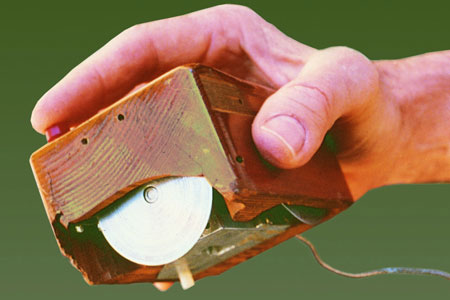The Open University hosted a ‘CAMEL’ workshop last week for a cluster of participants in JISC-funded projects. (CAMEL is a great community of practice model for e-learning management. See Theo’s blog for a nice succinct description or the CAMEL website for more info on this.) Ming and I attended from Beyond Distance in our capacity as researchers on the Beyond Distance DUCKLING project.
It was a hugely inspiring day for me – there was a kind of energy and warmth in this group of people who had been thrown together for the day that is usually only found amongst friends who have known each other for years. Full marks to Peter Chatterton and Steve Garner for setting up this wonderfully nourishing event. (And the Chinese dinner afterwards played no small part in the day’s success!)
Andy Bardill and Bob Fields from Middlesex University set the scene for the day by telling us about a fascinating project they are doing with their Interaction Design students. Imagine a design studio in a well-equipped university, with a lecturer and six to eight students sitting around a large table, and one student showing his or her photos or drawings to the group for critique. The conventional way to do this is to have each student projecting his or her work onto the wall using a data projector, while the rest of the students comment and take notes.
Andy and Bob are not conventional teachers, though, and they felt frustrated at the limited interaction, as most of the students sat with their heads bowed taking notes on their laptops. Their solution was to ban laptops from the classroom (an initially unpopular decision), and to project each student’s work from a ceiling-mounted projector onto the table (an accidental, but very exciting discovery, as it happened) instead of the wall… They covered the table with flipchart paper to provide a sort of screen for the projected image.
The side-effect (literally!) was that students started writing their notes on the table around the edges of the projected image, instead of typing on their disallowed laptops. This immediately had the effect of making previously private notes public, and catapulted the group into deeper conversation. At the end of each session, students started spontaneously taking photos of the conversation on the table as a record of their ‘notes’. You can see some of these intriguing photos on Andy Bardill’s Flickr page.
(http://www.flickr.com/photos/mdxinteractiondesign/)
The next development was to video the unfolding conversation on the table with a ceiling-mounted video camera, in order to have a record for later analysis of the learning process. No doubt we’ll hear more from Andy and Bob about what they’ve learnt from this as the project progresses.
In the meantime, it is worth noting that the simple act of moving the focus from the wall (‘out there/ away from us’) to the table (‘in here/ amongst us’) resulted in a change of perspective for the whole group. It enabled people to physically move around the image. Their interactions became focused on the centre of the table, as they gestured towards the central image while discussing it. A bit like the hub of a wheel that keeps the spokes together, this central point kept the participants connected in a way that a projected image on a wall cannot easily do. The popular literature from neurolinguistic programming also tells us that when we look down, we are drawing more on the emotional part of our brain. Perhaps there’s something in that too.
Thanks, Bob and Andy, for reminding us that technology on the sidelines (and on the ceiling) can sometimes be much more effective than technology on our laps or in-our-faces. We’ll be watching this space for more off-the-wall inspiration. (Just let us know which space, so we don’t get left behind staring at the table while you’ve moved onto the floor… or underground…)
Gabi Witthaus


